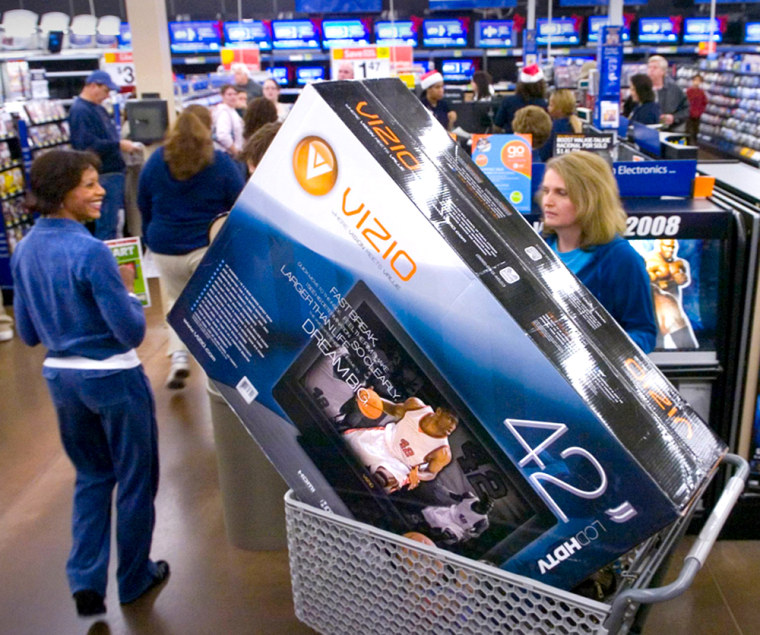QVC will start broadcasting in HDTV some time early this year. Forget the magic of football in high-def. Shopping trumps it (at least for this writer).
As you shop for a high-definition TV, the two biggest issues are size and display style, such as LCD vs. plasma.
After those decisions are made, here are some other issues to consider:
HDMI connections. In short, the more the better.
A few years ago, high-definition sets came with one HDMI connection; now, two and three are more common and definitely more desirable.
HDMI — which stands for High-Definition Multimedia Interface — can transmit both uncompressed audio and video signals. Its predecessor, DVI (digital video interface) handles video only.
Not only will you want to use HDMI for your satellite or cable hookup to get the benefit of high-def TV, you’ll also want it for connecting the set to other components, such as a high-definition DVD player, audio receiver or game console.
HDMI “is a pure, digital connection,” said Joe Bates, Consumer Electronics Association director of research.
“With HDMI, you’re not going from a digital to an analog cable to a digital screen. It’s designed to give you the absolutely best possible picture.”
1080p. No, that doesn’t mean $1,080-plus for an HDTV. The 1080 refers to 1,080 vertical pixels the screen displays. The “p” stands for “progressive,” in terms of how the picture is scanned on the screen. Another option is “interlaced,” which is noted with an “i,” as in 1080i.
The difference? “1080p is latest and greatest of the formats,” said Bates. “You have more lines of resolution in a progressive format. It’s the best picture possible on a TV set.”
You might remember having a computer monitor that would flicker a bit. “That’s because the display was interlaced,” Bates said.
“Every other line was refreshing itself in succession. With progressive, it’s progressive line scanning, so you’re getting every line being refreshed at the same moment for a much more steady and stable picture.”
1080p is the highest resolution available on the market now; there are also HDTVs with 720p.
Choosing the latter still ensures an excellent picture and can be less costly.
Going 3-D. It’s not for everyone, but it’s definitely “in a revival stage” for some videophiles, said Dan Schinasi of Samsung.
With movies like “Meet the Robinsons” and “Chicken Little,” available in 3-D, and more coming, both Samsung and Mitsubishi are leading the way in making high-definition sets using DLP (digital light processing) technology that can help bring the 3-D experience into your home.
You’ll need more than the 1950s-style, 3-D glasses to make it work, though.
The new tool of the trade is LCD shutter glasses, and a startup kit, including two pair of glasses and computer software, costs around $200, Schinasi said.
Menu, please. If you think trying to set up an HDTV can be confusing, so can navigating the television’s menu system once it’s plugged in.
When you’re in a store browsing, you may want to ask the salesperson for a set’s remote so you can check out the menu to see if you’re comfortable with it.
Sony recently introduced a menu system on its sets, “a graphic user interface with icons that make it very easy to wade through” choices, unlike “archaic TV menus,” said Greg Belloni, company spokesman.
The menu, he said, is a “cross-media bar interface, similar to that on the PlayStation 3.”
Wireless HDTV. Laptop users love their wireless, and apartment dwellers might like it, too, for HDTV.
Expect to pay more for such an option. At Samsung, “the price premium is around $400,” said Schinasi.
“Wireless is cleaner, simpler and you don’t have to run a cable through the wall,” he said. “The only people who don’t like it are those who sell the very long cables and the installers.”
It is a tech couch potato’s dream to have “all of your connections couch-side,” he said.
“It’s great when you have a digital or video camera, or even a PC. You can connect and disconnect those easily” to the set.
